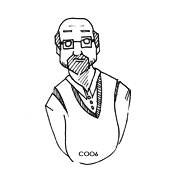Fog/Stratus

"With the two other examples - fronts and convective cells- we looked at IR image sequences only and could easily discriminate between cold and warm top clouds. Fog and Stratus is a warm top cloud system consequently with the basic IR images there are some problems during night to identify the fog areas exactly. It is clear that an appropriate channel combination will be necessary at least for the night hours. This is a bit different during the day hours, where High Resolution Visible images are an excellent source. But the topic of our exerceise here is a different:
What can a sequence of satellite images contribute to Fog Nowcasting? Typical questions are: "will fog develop or will it be advected into my forecast area or will for dissolve?" The sequence of images below are IR images from 03.00 to 07.30 and HRVIS images from 07.30 to 12.00."
What can a sequence of satellite images contribute to Fog Nowcasting? Typical questions are: "will fog develop or will it be advected into my forecast area or will for dissolve?" The sequence of images below are IR images from 03.00 to 07.30 and HRVIS images from 07.30 to 12.00."

30 Januar 06/03.00 UTC - IR image
There are three points of discussion which should be mentioned:
In contrary to the night IR images the daytime Visible images and especially the high resolution Vis images show the fog/stratus areas very well: the Danube valley in Austria, the northeastern end eastern parts in Austria, some valleys in Austria and the extended area in Hungary (except the easternmost parts).
With the sequence of HRVIS images several changes can be observed quire well:
- the area with fog/stratus is not easy to detect in the IR images. It is not the grey shaded area alone which helps to identify fog but it is much more the combination of a relevant greyshade, a typical area where it has developed and typical (mostly sharp) cloud boundaries; So in this case the areas N and E of the Alps are very predestined to be analysed as fog.
- In contrast to what just has been said there is in the IR images a dark/black area in the east of the Alps and over Hungary which usually would be typical for a cloudfree area. This is very likely a so-called area of "Black Fog". In very cold winter situations the cloud/fog free land becomes through outgoing radiation even colder than the fog area which is warmer (darker) than the cloudfree surrounding.
- A sequence of IR images during night gives only little information about changes or advection. Consequently this is a field where an appropriate combination of channels must be found to enhance the situation.
In contrary to the night IR images the daytime Visible images and especially the high resolution Vis images show the fog/stratus areas very well: the Danube valley in Austria, the northeastern end eastern parts in Austria, some valleys in Austria and the extended area in Hungary (except the easternmost parts).
With the sequence of HRVIS images several changes can be observed quire well:
- The dissolution of fog/stratus can best be seen in the valley in East Austria. Between 10.30 - 11.15 fog disappears;
- The easternmost boundary of the fog/stratus in Hungary shows from 7.30 till to the end of the sequence a distinct east- southeastward advection;
- Also the fog/stratus field in north Jugoslavia from the Croatian border eastward shows formation between 8.30 and 9.30 and later on again decay (from 11.30 on).
"Let us have a look at the meteorological observations for this situation. Follow
this link
to begin!"